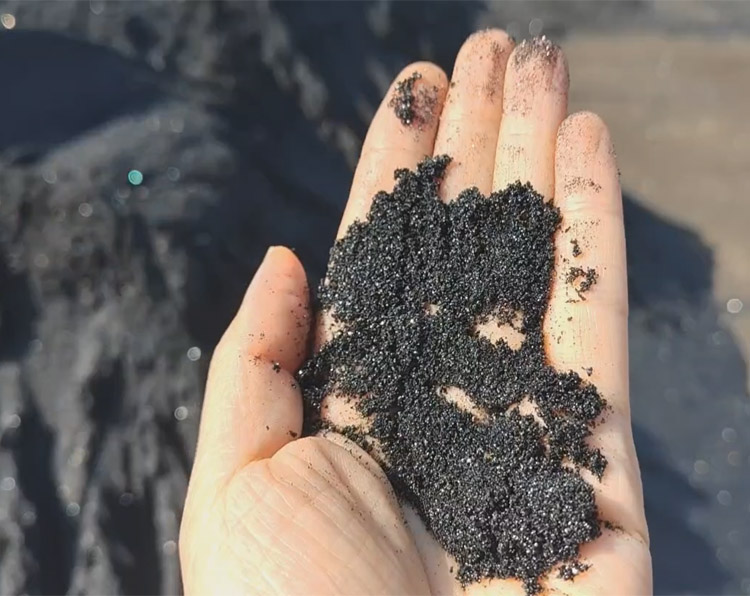Natural chromite sand & synthetic chromite sand
Chromium-based minerals are commonly used products in the industry. From the source, there are natural chromite sand and synthetic chromite sand.
Chromite sand used in casting and refractory is from natural chrome ore mines by mining, processing, and crushing. This type of chrome sand generally has a Cr2O3 content of 35-50% with formula (Fe, Mg)O*(Cr, Fe, Al)2O3. It consists of iron, magnesium, aluminum, as well as a small amount of silicon. The crystal of chromite sand is a fine octahedron. And the angular coefficient of crushed chrome sand is small, with few sharp corners, and has a metallic luster. Chrome sand used for casting is required to contain more than 46% chromium. Chromite sand has a high refractory temperature. It is higher than that of naturally mined silica sand, reaching over 1800 degrees Celsius. Chromite sand also has good chilling properties, making it suitable for use as surface sand and molding sand in sand casting, as well as ladle drainage sand in the steel industry. The iron content in natural chromium ore sand is high, resulting in a high proportion of chromium sand
Synthetic chromite sand is mainly a type of chromium particle obtained by synthesizing the recovered chromium-containing material through high-temperature calcination and other methods. The chemically synthesized chromium sand contains high sulfur and calcium content, low iron and aluminum content, and over 2% silicon content. The synthesized chromium oxide particles are mainly used in industries such as tanning, building materials, ceramics, etc.
















